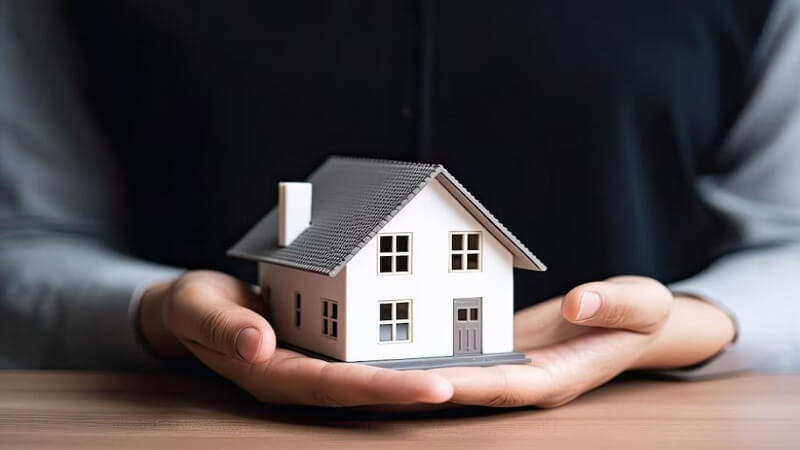Creating your dream home is an exhilarating journey that blends imagination and practicality to forge a space that’s uniquely yours. This comprehensive guide offers essential tips and tricks for navigating the complex process of home building, from initial planning to the finishing touches. Whether you’re constructing from scratch or undertaking a major renovation, these insights will help ensure your project is a success.
Start with a Solid Plan
Embarking on the construction of your dream home begins with a detailed and well-thought-out plan involving the use of construction vehicles. Define your vision by considering size, location, style, and specific needs. Consulting with an architect to bring these ideas into a coherent plan is crucial. They can help create a blueprint that balances aesthetic desires with structural realities, ensuring your home is both beautiful and functional. Effective planning, including the strategic use of construction vehicles, sets the stage for a smoother building process and helps prevent costly and time-consuming revisions.
Choose the Right Team
The team you choose will turn your dream home into reality. Select a reputable builder and designer who aligns with your vision and style preferences. Research their past projects, read client reviews, and check their credentials to ensure quality. An ideal team not only understands your aesthetic and functional needs but also communicates openly. Meet regularly with your builder and designer to ensure the project stays aligned with your goals.
Budget Wisely
A realistic budget is fundamental to the home-building process. Itemize all costs, including materials, labor, permits, and a contingency fund for unforeseen expenses, which should be around 10-20% of the total budget. Prioritize spending on structural investments over cosmetic additions which can be updated over time. Regularly review the budget with your contractor to ensure the project remains financially manageable and to make adjustments as needed.
Design for Functionality and Aesthetics
Your home should be a reflection of your personal style while being functional for everyday living. Consider the flow of rooms, storage solutions, and energy efficiency when planning the layout. Use a mix of timeless and contemporary design elements to create a cohesive look. Think about the long-term usability of the space, especially if you plan to age in place. Incorporate elements that can adapt to changing needs over time.
Sustainable and Eco-Friendly Options
Eco-friendly building materials and practices not only reduce your carbon footprint but also can be economically beneficial in the long run. Consider solar panels, sustainable insulation, energy-efficient windows, and eco-friendly paint. These features can enhance indoor air quality, reduce energy costs, and increase the property’s value. Discuss with your builder about obtaining certifications like LEED, which can further validate the sustainability efforts of your construction.
Navigate Legal Requirements
Ensure compliance with local zoning laws, building codes, and permits before beginning construction. Hiring a professional to handle these legal aspects can save you from costly mistakes and delays. They can help navigate the complexities of legal requirements and obtain all necessary approvals, ensuring that your building process is smooth and compliant.
Quality Materials Make a Difference
Choosing the right materials affects both the appearance and longevity of your home. Invest in high-quality woods, metals, and stones for critical elements like foundations, frames, and roofing. These materials should not only complement the design but also offer durability against environmental factors. Quality materials might come at a higher upfront cost but typically require less maintenance and are less likely to need early replacement.
Don’t Overlook the Plumbing
Plumbing might not be glamorous, but it’s crucial. Poor plumbing can lead to significant problems, from water damage and mold to inefficient heating and cooling. Ensure that the plumbing system is expertly installed and uses quality materials to prevent issues. Consider innovative solutions like tankless water heaters or recycled water systems, which can be more sustainable and efficient.
Lighting and Electrical Work
The right lighting can transform a space. Incorporate a variety of lighting sources, including natural light, fixtures, and task lighting, to enhance the functionality and atmosphere of each room. Ensure that electrical systems are safe and can accommodate future technological needs. This includes ample outlets, energy-efficient fixtures, and possibly smart home integrations.
Interior Design and Finishing Touches
The final layer of your home construction is interior design. This is your opportunity to personalize each space to reflect your tastes and needs. Select colors, textures, and furnishings that create a cohesive look throughout the home. Don’t rush these decisions; choosing the right finishing touches can make all the difference in creating your dream home.
Landscaping for Curb Appeal
Landscaping is essential for adding beauty and value to your home. Plan your outdoor spaces as carefully as the interior, with considerations for both aesthetics and privacy. Use native plants such as flourishing redbud bush to reduce maintenance and watering costs, and design patios or decks as natural extensions of your indoor living spaces.
Regular Communication is Key
Effective communication with your building team is critical to keep your project on track. Regular updates and meetings will help catch and resolve issues early, ensuring the project progresses smoothly and according to plan. Be clear about your expectations and stay involved in the decision-making process.
Conclusion
Building your dream home is a significant undertaking that requires careful planning, a dedicated team, and a proactive approach to decision-making. By adhering to these practical tips and tricks, you can ensure that the process is enjoyable and the outcome is a beautiful, functional space tailored to your lifestyle. With the right preparation and mindset, your dream home will stand as a testament to your efforts, providing comfort and happiness for years to come.
